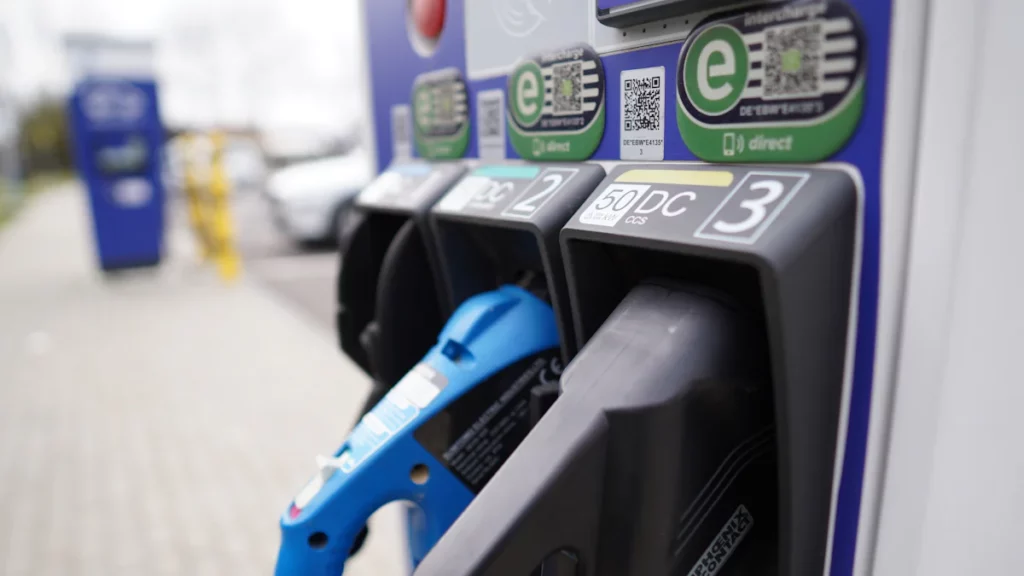Introduction
In the realm of sustainable transportation, the establishment of EV charging infrastructure plays a pivotal role in fostering widespread adoption. Sri Lanka, amidst its evolving landscape, is witnessing significant strides in EV charging development in Sri Lanka. This guide aims to illuminate the current state of affairs and provide a roadmap for future endeavors. By delving into the nuances of AC EV chargers and DC fast chargers, this guide equips stakeholders with essential insights to navigate the dynamic domain of electric mobility.
Step 1: Assessing the Current Landscape
Understanding EV Charging Development in Sri Lanka
In the realm of EV charging development in Sri Lanka, the current landscape unveils a promising trajectory. The current EV market showcases a burgeoning trend towards sustainable transportation, with projections indicating exponential growth. This surge aligns with the nation’s commitment to eco-friendly initiatives. Moreover, the presence of existing charging infrastructure serves as a foundation for future expansion and innovation in the electric mobility sector.
Identifying Stakeholders
Within this dynamic ecosystem, various stakeholders play integral roles in shaping the future of EV charging infrastructure. Government bodies spearhead regulatory frameworks and policy implementations to facilitate seamless integration. Their strategic decisions influence the direction of sustainable transportation initiatives. Additionally, private sector involvement injects innovation and investment into the evolving landscape, fostering collaboration and technological advancements.
Evaluating Technological Needs
A critical aspect of advancing EV charging infrastructure lies in evaluating technological needs to cater to diverse consumer demands. The differentiation between AC EV chargers and DC fast chargers is paramount in addressing varying charging requirements efficiently. Furthermore, ensuring compatibility with vehicles underscores the importance of seamless user experiences and operational convenience.
Step 2: Planning and Design
Site Selection
When considering site selection for EV charging infrastructure, prioritizing urban vs. rural considerations is crucial to ensure optimal accessibility and utilization. In urban settings, the focus lies on high-traffic areas and commercial hubs to cater to the growing demand for electric vehicle charging facilities. On the other hand, in rural areas, strategic placement near key transportation routes and public amenities enhances convenience for EV users.
Urban vs. rural considerations
Urban areas require charging stations in bustling city centers.
Rural locations benefit from chargers near highways or popular stops.
Infrastructure Design
The design of the infrastructure must align with stringent electrical requirements to guarantee safe and efficient operations. Adhering to standardized protocols and specifications ensures seamless integration with existing power grids while minimizing potential disruptions. Moreover, emphasizing compliance with established safety standards fosters user confidence and promotes a secure charging environment for all stakeholders.
Electrical requirements
Infrastructure design should meet electrical grid specifications.
Compliance with safety regulations is paramount for operational integrity.
Financial Planning
Incorporating robust financial planning strategies is fundamental to the sustainable development of EV charging infrastructure. Conducting thorough cost estimation exercises enables accurate budget projections, facilitating prudent resource allocation throughout the project lifecycle. Exploring diverse funding sources, including public-private partnerships and government grants, diversifies financial avenues and sustains long-term viability.
Cost estimation
Accurate cost estimations are essential for budgetary control.
Prudent financial planning ensures resource optimization.
Funding sources
Public-private partnerships offer sustainable funding solutions.
Government grants provide additional financial support avenues.
Step 3: Implementation and Maintenance
Installation Process
When initiating the Installation Process for EV charging infrastructure, meticulous attention to detail is paramount to ensure seamless operations. Equipment procurement involves sourcing high-quality components that align with industry standards and specifications. By selecting reliable suppliers and conducting thorough quality assessments, stakeholders can guarantee the durability and efficiency of the charging infrastructure.
Equipment procurement
Source components from reputable suppliers for reliability.
Conduct quality assessments to ensure compliance with industry standards.
Installation guidelines
Adhere to installation protocols for optimal system performance.
Implement safety measures during the installation process.
Maintenance and Support
Sustaining the longevity of EV charging infrastructure necessitates a proactive approach towards Maintenance and Support services. Establishing regular maintenance schedules enables timely inspections and preventive measures to mitigate potential issues effectively. Moreover, offering comprehensive technical support and troubleshooting guidance ensures uninterrupted service delivery for EV users.
Regular maintenance schedules
Schedule routine inspections to identify maintenance requirements promptly.
Implement preventive measures to enhance operational efficiency.
Technical support and troubleshooting
Provide responsive technical assistance for immediate issue resolution.
Offer detailed troubleshooting guidelines for common operational challenges.
Monitoring and Evaluation
Continuous Monitoring and Evaluation of EV charging infrastructure performance is essential to gauge operational efficacy and user satisfaction levels accurately. Tracking key performance metrics such as utilization rates and energy consumption facilitates data-driven decision-making for future enhancements. Additionally, gathering valuable user feedback enables stakeholders to address concerns promptly and optimize service delivery.
Performance metrics
Monitor utilization rates to assess infrastructure efficiency.
Track energy consumption patterns for informed decision-making.
User feedback
Gather insights from user experiences to enhance service quality.
Address user concerns promptly to improve overall satisfaction levels.
Conclusion
To conclude, the journey towards establishing a robust EV charging infrastructure in Sri Lanka entails meticulous planning and strategic execution. By recapping the key steps outlined in this guide, stakeholders can navigate the complexities of sustainable transportation with clarity and purpose.
Emphasizing the importance of continuous development is paramount to meet evolving consumer demands and technological advancements. Sustained innovation and adaptation are key drivers for enhancing operational efficiency and user satisfaction in the electric mobility landscape.
Looking ahead, the future prospects for EV charging infrastructure in Sri Lanka are promising. With ongoing initiatives by industry leaders like chargeNET and collaborative efforts with organizations such as USAID Sri Lanka Energy Program, the nation is poised to embrace a greener and more sustainable future in the realm of electric vehicle adoption.







